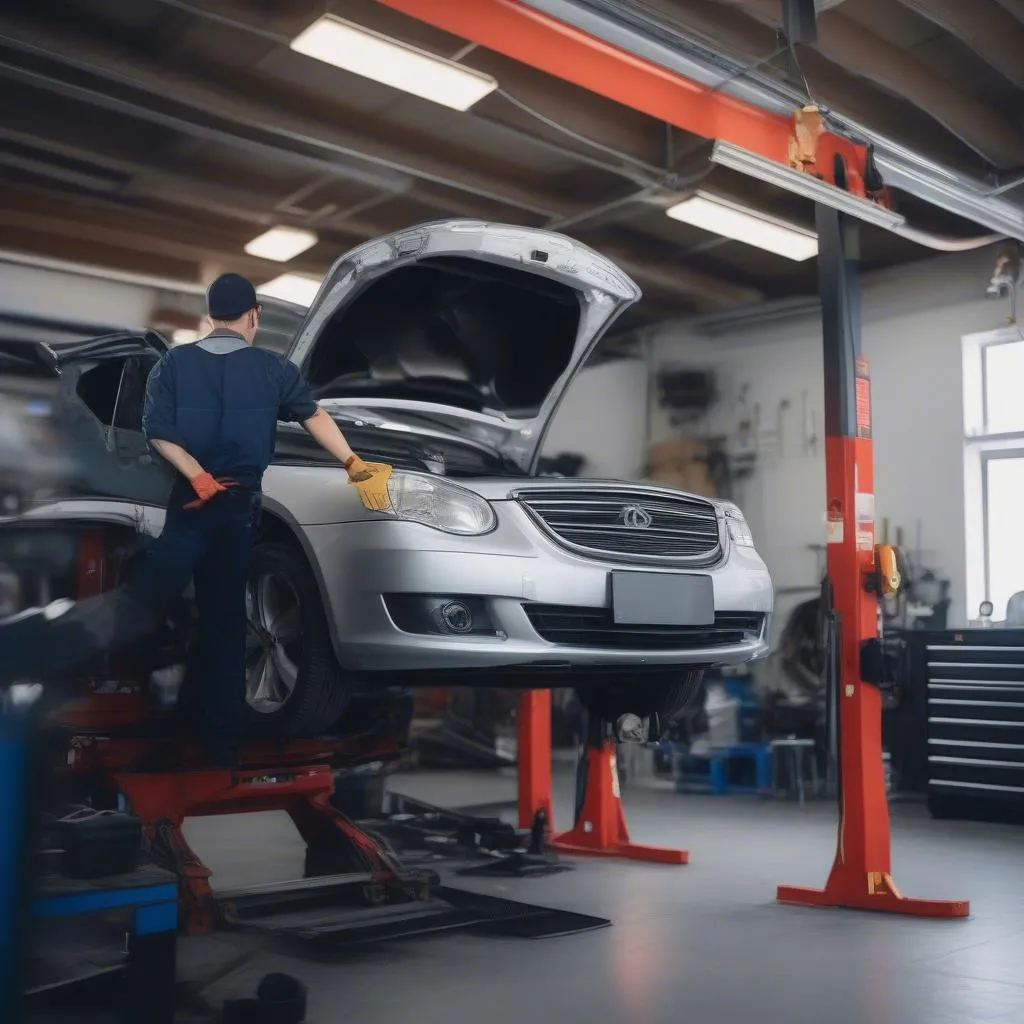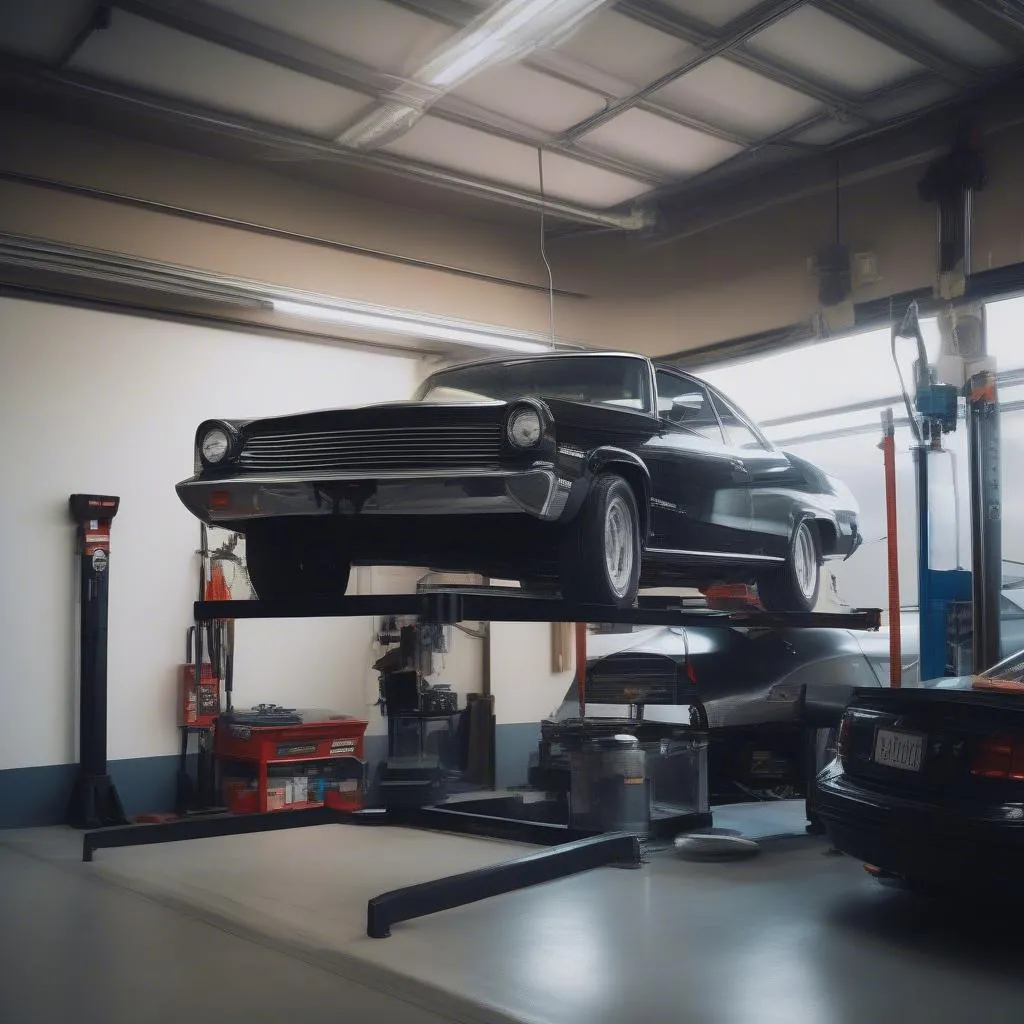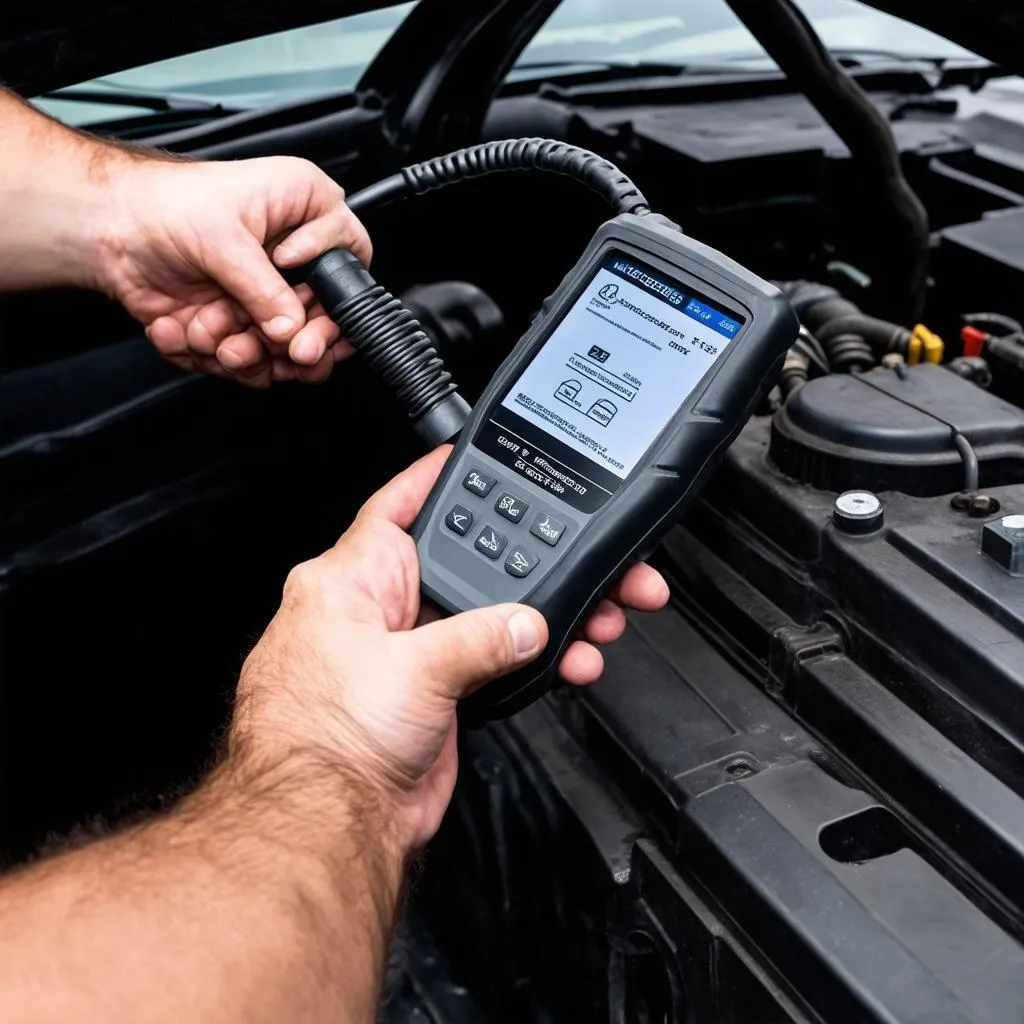Experiencing a sudden drop in your Mercedes’ performance? A “check engine” light illuminating your dashboard? You might be facing the dreaded P2098 code, a common yet often misunderstood issue. This comprehensive guide delves into the P2098 code, its causes, symptoms, and most importantly, how to fix it.
What does the P2098 Code Mean?
In simple terms, the P2098 code indicates a problem with your vehicle’s exhaust system, specifically the “A” bank of your engine (usually the side with cylinder #1). It signals an issue with the post-catalyst fuel trim system, meaning the oxygen sensors downstream of your catalytic converter are detecting an incorrect air-fuel ratio.
Recognizing the Symptoms of a P2098 Code
The P2098 code can manifest itself in several ways. Here are some common symptoms:
- Illuminated Check Engine Light: This is your car’s primary way of alerting you to an issue.
- Reduced Fuel Efficiency: An incorrect air-fuel ratio can lead to increased fuel consumption.
- Sluggish Acceleration: Your engine might feel less responsive, particularly when accelerating.
- Rough Idling: You might notice your engine running rough or unevenly when the car is stopped.
- Engine Hesitation: Your car may hesitate or stumble during acceleration.
Essential Tools for Diagnosing and Fixing the P2098 Code
Before you get started, gathering the necessary tools will make the process smoother:
- OBD-II Scanner: This tool allows you to read and clear the error codes stored in your car’s computer. Consider options like those offered by Cardiagtech for reliable diagnostics.
- Basic Hand Tools: A socket set, wrenches, and screwdrivers will be needed for various tasks.
- Digital Multimeter: Used for testing electrical components like sensors and wiring.
- Safety Equipment: Always prioritize safety with gloves and eye protection.
A Step-by-Step Guide to Fixing the P2098 Code
While the exact steps might vary slightly depending on your specific Mercedes model, this general guide outlines the process:
-
Verify the Code: Begin by confirming that the P2098 code is the culprit. Connect your OBD-II scanner, retrieve the code, and clear it. If it returns after driving for a short period, proceed to the next step.
-
Inspect for Vacuum Leaks: A common cause of this code is a leak in the vacuum system. Carefully examine hoses and connections for cracks, loose clamps, or damage.
-
Check the Oxygen Sensors: Faulty oxygen sensors (both upstream and downstream) can send incorrect readings to the car’s computer. Using the multimeter, check their resistance and voltage output, comparing them to manufacturer specifications.
-
Inspect the Catalytic Converter: A malfunctioning catalytic converter can also trigger this code. Look for signs of damage or blockage.
-
Examine the Fuel System: Issues like a clogged fuel filter, failing fuel pump, or dirty injectors can affect the air-fuel mixture.
-
Consult Professional Help: If you’re uncomfortable with any of these steps or haven’t been able to pinpoint the issue, consult a qualified mechanic, preferably one specializing in Mercedes-Benz vehicles.
 Mechanic Inspecting a Car
Mechanic Inspecting a Car
FAQs About P2098 Code in Mercedes
Q: Can I continue driving with a P2098 code?
A: While you might be able to drive for a short period, it’s not recommended. Ignoring the code can lead to further damage to your engine and emissions system.
Q: What is the difference between upstream and downstream oxygen sensors?
A: Upstream sensors are located before the catalytic converter and monitor the air-fuel mixture entering it. Downstream sensors are positioned after the converter and check its efficiency.
Q: Are aftermarket catalytic converters a good option?
A: While often more affordable, aftermarket catalytic converters might not meet the same standards as OEM parts. This can lead to performance issues and potentially void your car’s warranty. It’s generally recommended to invest in OEM parts for optimal performance and longevity.
Q: How often should I have my car serviced?
A: Regular maintenance is key to preventing issues like the P2098 code. Refer to your Mercedes owner’s manual for the recommended service intervals.
 Car on a Lift in a Garage
Car on a Lift in a Garage
Conclusion
Encountering the P2098 code in your Mercedes-Benz can be frustrating, but understanding its meaning and taking the right steps for diagnosis and repair can get you back on the road quickly and safely. Remember, using a quality diagnostic tool like those offered by CARDIAGTECH can be invaluable in identifying the root cause of the issue. Always prioritize safety and consult a professional mechanic if you are unsure about any aspect of the repair process.

